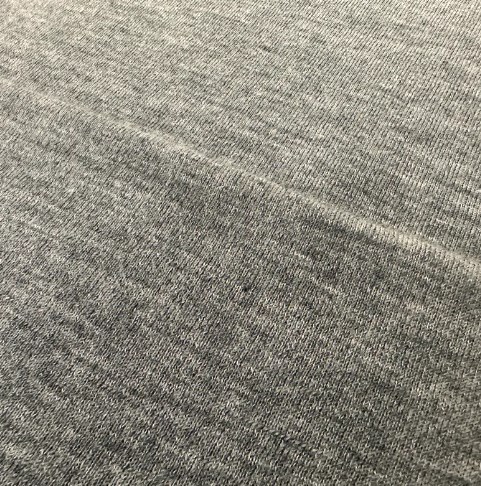Soft Cashmere Wool Yarns: A New Fiber Experience for Ultimate Softness and Comfort
 2025.10.08
2025.10.08
 Industry News
Industry News
In the modern textile industry, soft cashmere wool yarn, with its luxurious texture and exceptional warmth, has become a core material in high-end fabric manufacturing. This yarn not only embodies the ultimate softness of natural fibers, but also, driven by innovations in spinning technology and processes, offers a more refined structure and superior comfort. As consumers increasingly demand high-quality, sustainable fabrics, cashmere yarn continues to rise in the market, becoming the yarn of choice for many high-end apparel brands and home furnishings.
The Unique Structure and Softness of Cashmere Fiber
The core of soft cashmere wool yarn's popularity lies in its natural properties. Cashmere fiber, derived from the undercoat of goats, is a fine, silky natural fiber with exceptional fineness and elasticity. Compared to ordinary wool, cashmere fiber has a smoother surface and smaller interfiber spaces, resulting in a lightweight yet dense structure that delivers an unparalleled soft feel. Its natural crimp imparts excellent resilience during weaving, resulting in a finished fabric that not only has a delicate hand, but also maintains a stable shape and durability.
During the spinning process, soft cashmere wool yarns typically utilize worsted or semi-worsted spinning techniques to ensure straight fibers, uniform yarn length, and maximize the softness and luster of native cashmere. Modern textile equipment enables more precise control of yarn twist and a more balanced fiber arrangement, resulting in a light, smooth, and layered texture that distinguishes it from other natural yarns.

Quality Improvement through Advanced Spinning Technology
The production of cashmere wool yarn relies not only on raw material quality; process innovation is also a crucial factor in determining its market competitiveness. The production of soft cashmere wool yarns involves multiple stages, including combing, drawing, fine spinning, and twisting. Each step requires strict control of temperature, humidity, and tension. Precise process management ensures that the fiber's flexibility and luster are not compromised, while also imparting excellent dyeability and color stability to the finished yarn.
With technological advancements, many manufacturers have incorporated environmentally friendly softeners and low-temperature dyeing techniques into cashmere yarn, ensuring it maintains its soft texture while also enhancing color fastness and abrasion resistance. Soft cashmere wool yarn, after undergoing special finishing, has a finer surface, a light and smooth touch, and a delicate natural luster, making it highly sought after in the high-end fashion sector.
Soft Cashmere Yarn's Application Value and Fashion Performance
From fashion apparel to home textiles, soft cashmere wool yarn demonstrates multifaceted application value. Due to its excellent warmth and breathability, this yarn is often used in autumn and winter apparel, such as sweaters, scarves, and shawls, achieving excellent thermal balance while maintaining lightness. Fabrics woven from cashmere yarn are soft against the skin, suitable for long-term wear, embodying the comfort properties of natural fibers.
In the home textile industry, soft cashmere yarn, with its delicate texture and premium appearance, has become a key choice for high-end blankets, cushions, and bedding. The natural moisture retention properties of its fiber structure balance humidity, ensuring the fabric maintains a comfortable feel in varying climates. As consumers' pursuit of a more refined lifestyle evolves, cashmere yarn products represent not only comfort but also refinement and taste.
The Development of Cashmere Yarn Under the Concept of Sustainability
Amid the global trend toward sustainable development, the production and application of soft cashmere wool yarn are shifting towards environmental protection and responsible practices. Cashmere raw material sourcing is increasingly focused on ecological grazing and animal welfare, with a traceable raw material system ensuring the sustainability of each batch of fiber. Furthermore, the use of green spinning and energy-saving dyeing and finishing processes reduces the use of chemical auxiliaries and energy consumption, ensuring that cashmere yarn not only delivers a luxurious feel but also meets environmental standards.

The emerging concept of "recycled cashmere yarn" in the industry, through the recycling and reprocessing of old yarn and discarded fabrics, not only reduces resource waste but also injects new environmental value into high-end textiles. Soft cashmere wool yarn is becoming a key link in the sustainable textile industry chain, embodying the future trend of prioritizing both environmental protection and quality.
Soft cashmere wool yarn is more than just a textile raw material; it represents a fusion of craftsmanship and fashion. Based on its natural softness and technological innovation, it continues to drive the development of the high-end fabric market. From comfortable touch to visual texture, from fiber craftsmanship to environmental protection, Soft Cashmere Wool Yarns is redefining the industry standard for high-quality yarns. As consumers' pursuit of both comfort and sustainability continues to rise, soft cashmere yarn will continue to play a vital role in the global textile market, showcasing its unique charm of combining luxury and naturalness.







